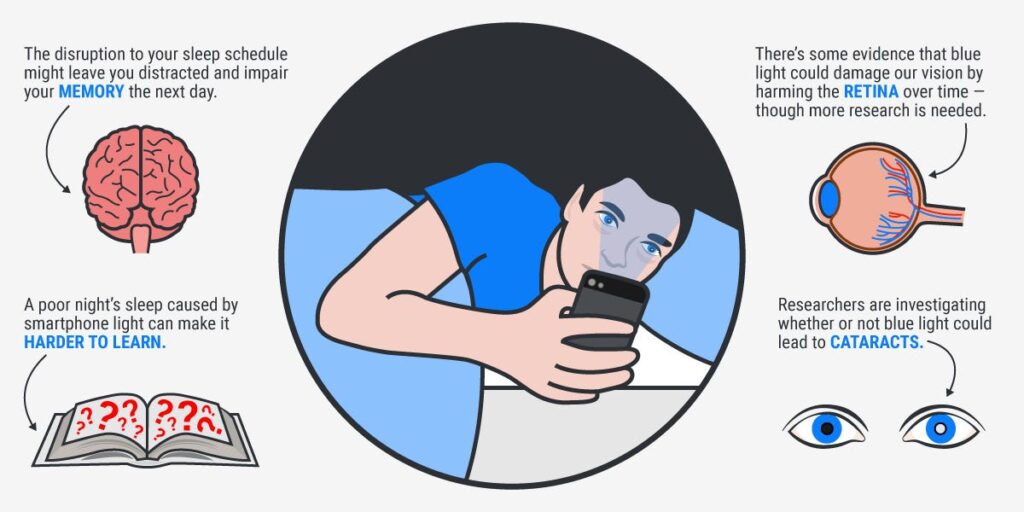‘Blue light’ is a term that is often mentioned in the media, but most people don’t comprehend its physical significance and the adverse effects caused by continuous exposure to it. Almost every Australian has access to some sort of electronic device at all times, ranging from children to the elderly. Hence it becomes quite pertinent to address certain concerns regarding blue light.
These include questions like- “What exactly is blue light?”, “What safety precautions actually have to be taken to avoid overexposure?” and “Where can one find blue light glasses in Australia?”. It is absolutely necessary to distinguish fact from fiction while dispelling inaccurate information when dealing with subjects such as these.
What is Blue Light?
White light is made of seven different colours. Each of these colours is electromagnetic radiation of a unique wavelength on the visible spectrum. Blue light belongs to the wavelength range of 400-500 nm, although any wavelength on the blue end of the spectrum could be classified as blue light radiation.
The sun is the largest source of blue light, and secondary sources include Fluorescent lights, LED lights, Computer Monitors, Phone and Tablet Screens, and flat-screen LED televisions. However, the latter is more concerning as most of the world is spending a lot of time using these devices, leading to increased exposure.
How does Blue Light affect a person?
Blue light exposure does have some benefits for the human body. It improves memory, boosts alertness and regulates the circadian rhythm. But increased exposure can have serious consequences. It is beneficial during the day and harmful at night (or after sundown).
Some of the possible negative effects of prolonged exposure to blue light are as follows-
- Blue light from computer and phone screens decrease contrast, which leads to digital eye strain. This is compounded by fatigue, bad lighting and dry eyes. A common symptom of eye strain is sore eyes.
- Studies show that continuous exposure to blue light could damage retinal cells. This causes premature ageing of the eyes and leads to age-related eyesight problems such as macular degeneration.
- A study by Harvard University suggested that the shift in circadian rhythms caused by blue light exposure at night could lead to obesity, heart disease and diabetes.
- A disturbed mind could be prone to mental health disorders such as depression and anxiety.
- The AIHS or the Australian Institute of Health and Safety has claimed that the same quantity of blue light causes much more harm and damage to the eyes when compared to other colors, hence justifying the concerns surrounding it.
Safety Precautions
Few steps can be taken to prevent vision damage resulting from exposure to blue light. These include –
- Reducing screen time and taking frequent breaks to give the eyes some rest.
- Using dim red light after sundown. The reasoning behind this is that red light doesn’t drastically impact the circadian rhythm the way blue light does.
- Using protective glasses. Certain glasses can increase contrast and reduce strain on the eyes. Plenty of high-quality and cost-effective options are now available for people interested in purchasing blue light glasses in Australia.
- Using blue light filters. Screen filters for tablets, computers, and mobile phones can now be installed so that these devices emit less blue light.
For further information regarding blue light and its current regulatory standards in Australia, click here.

